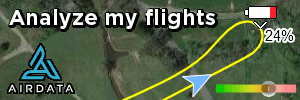I'm new to this forum, and I'm posting this in the hopes of getting some valuable feedback.
As a landscaping company, we’re wanting to start using a drone to measure sites for estimating purposes. We’d like to maintain an accuracy of at least 6”. I’ve heard someone suggest laying an object of a known length on the site and make sure it shows up in the imagery to use as a reference. Is this a reliable solution? If not, what solution(s) do people recommend?
We’re not looking for sub-inch accuracy, so I see no need to invest $5-10k+ on RTK/PPK equipment unless there really is no step between this and 1-3ft accuracy which you might get with a good onboard GPS.
Together with this, I’d like to hear some suggestions for models of drones to consider for this purpose. We currently use a Yuneec Mantis Q for taking overview pictures of sites, but I’m thinking this unit may not be suitable for accurate mapping due to limited flight planning features, sub-par photo quality, etc. I understand the DJI Phantom 4 Pro is often considered the gold-standard for drone mapping, but are there any other more economical options?
As a landscaping company, we’re wanting to start using a drone to measure sites for estimating purposes. We’d like to maintain an accuracy of at least 6”. I’ve heard someone suggest laying an object of a known length on the site and make sure it shows up in the imagery to use as a reference. Is this a reliable solution? If not, what solution(s) do people recommend?
We’re not looking for sub-inch accuracy, so I see no need to invest $5-10k+ on RTK/PPK equipment unless there really is no step between this and 1-3ft accuracy which you might get with a good onboard GPS.
Together with this, I’d like to hear some suggestions for models of drones to consider for this purpose. We currently use a Yuneec Mantis Q for taking overview pictures of sites, but I’m thinking this unit may not be suitable for accurate mapping due to limited flight planning features, sub-par photo quality, etc. I understand the DJI Phantom 4 Pro is often considered the gold-standard for drone mapping, but are there any other more economical options?




